Discover 11 hidden attractions, cool sights, and unusual things to do in Wetzlar (Germany). Don't miss out on these must-see attractions: Lottehaus, Wetzlar Cathedral, and Kletterwald Wetzlar. Also, be sure to include Reichskammergericht in your itinerary.
Below, you can find the list of the most amazing places you should visit in Wetzlar (Hesse).
Table of Contents
Lottehaus
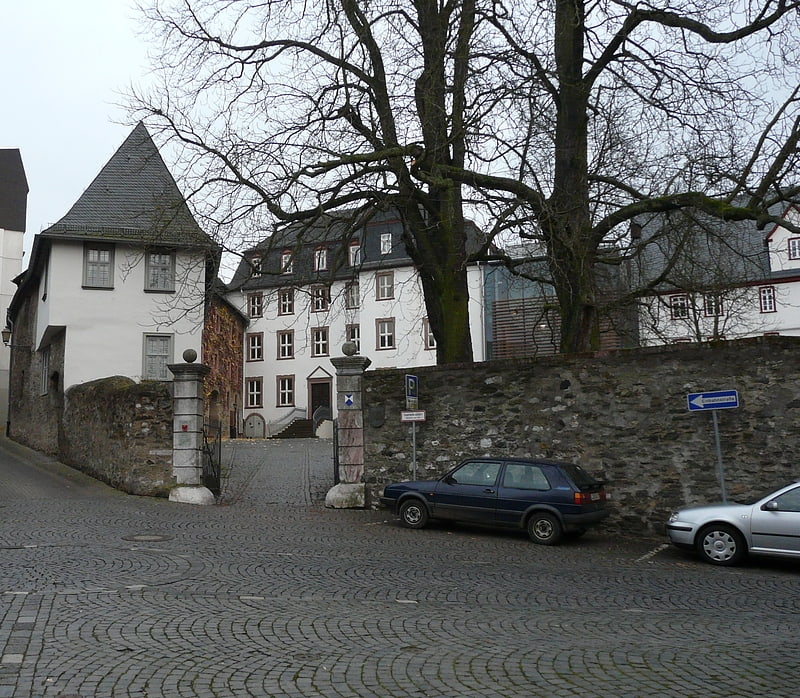
Museum in Wetzlar, Germany. The Lottehaus is a museum in Wetzlar, Germany. It was the birthplace of Charlotte Buff, who lived there for the first 20 years of her life until she got married.
The Lottehaus was originally an establishment of the Teutonic Order, which founded it in 1285 under the name Haus Wetzlar as its principal office in the city of Wetzlar. Over the years the establishment was extended by several buildings and the actual Lottehaus was constructed in 1653 to house the local curator of the order. Heinrich Adam Buff moved into the Lottehaus in 1740, when he started his work as curator for the order. His daughter Charlotte, after who the house is named today, was born in it on 11 January 1753 and to lived there for the first 20 years of her until she got married in 1773. After Charlotte had become famous for being the inspiration for Johann Wolfgang von Goethe's novel The Sorrows of Young Werther the citizens of Wetzlar decided in 1863 to use the house as a memorial for her.
Today the Lottehaus is a part of the museums of the city of Wetzlar and contains a permanent exhibition. On display are furniture and various items illustrating life in the 18th century, some of which originally belonged to the Buff family. There are also three rooms devoted to the work of Goethe and in particular to the contemporary reception of his novel The Sorrows of Young Werther.
Another museum in Wetzlar containing material related to Goethe and Werther as well is the Jerusalemhaus.[1]
Address: Lottestr. 8-10, 35578 Wetzlar
Wetzlar Cathedral
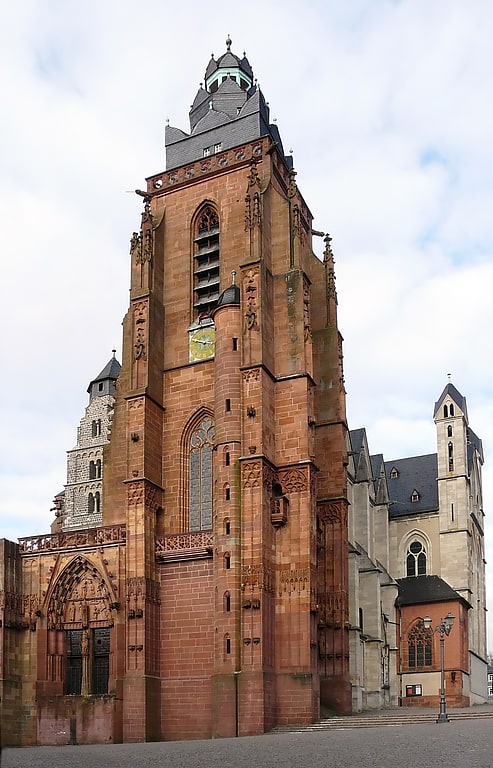
Also known as: Wetzlarer Dom
Cathedral in Wetzlar, Germany. Wetzlar Cathedral is a large church in the town of Wetzlar, located on the Lahn river some 50 km north of Frankfurt. Construction began in 1230 and is still unfinished, since the western front is still missing its northern belfry. Because of its long period of construction, the church combines romanesque, gothic and baroque architecture.
The church has never been a bishop's seat, and therefore is not a cathedral in the English sense. The German term for "cathedral", Dom, often includes churches that lack a cathedra (a bishop's throne) and instead refers to any large medieval church. In Wetzlar, the main church has been called a Dom since the 17th century.
In 897, Rudolf I, Bishop of Würzburg consecrated a Salvator Church replacing an older church on the same location. In the early 10th century it became a Collegiate church devoted to St. Mary. Around 1170 the church was rebuilt into a romanesque basilica with two western spires. Parts of the western portal are still visible in the contemporary building.
After 1230, the cathedral was rebuilt and extended again. Construction lasted until 1490 and remained unfinished. The church became a Hall church with two towers. Construction of the northern spire was started but abandoned long before completion (see image). The southern tower's steep pinnacle was made of wood and was destroyed by a fire in 1561. It was replaced by the baroque tower roof still extant today.
In World War II the cathedral was damaged by bombs. Most of the damage was repairable, but the precious stained glass windows and the organ were lost and had to be replaced by modern equipment.
Since the 16th century, Wetzlar Cathedral has been used as a simultaneum by both Roman Catholics (whose congregations form part of today's Roman Catholic Diocese of Limburg) and Protestants, respectively. Today, the church is the main tourist attraction inside the historical city center of Wetzlar.[2]
Address: Dom Platz, Wetzlar
Kletterwald Wetzlar

Game and entertainment center, Theme park, Amusement park, Climbing
Address: Waldessaum 3, 35578 Wetzlar
Reichskammergericht
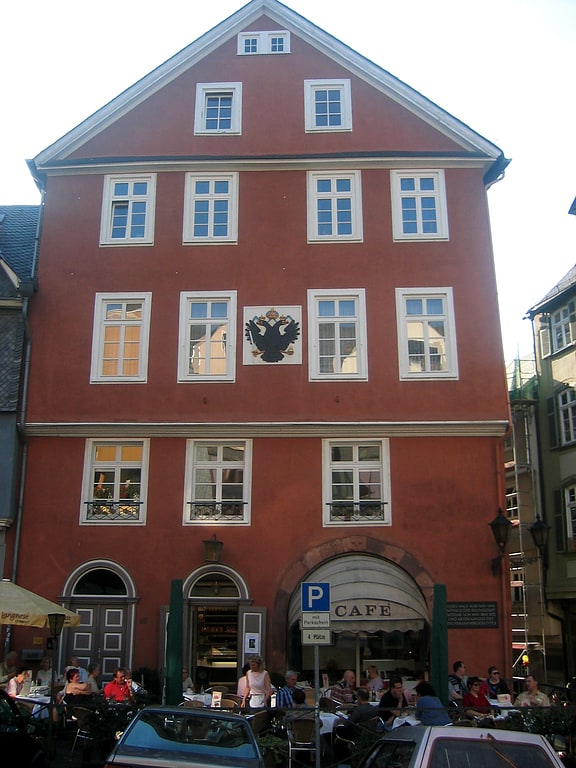
The Reichskammergericht was one of the two highest judicial institutions in the Holy Roman Empire, the other one being the Aulic Council in Vienna. It was founded in 1495 by the Imperial Diet in Worms. All legal proceedings in the Holy Roman Empire could be brought to the Imperial Chamber Court, except if the ruler of the territory had a so-called privilegium de non appellando, in which case the highest judicial institution was found by the ruler of that territory. Another exception was criminal law in which the Imperial Chamber Court could intervene only if basic procedural rules had been violated.
The Imperial Chamber Court was infamous for the long time that it took to reach a verdict. Some proceedings, especially in lawsuits between different states of the Empire, took several hundred years. Some of the lawsuits had not been brought to an end when it was dissolved in 1806 following the downfall of the Holy Roman Empire. However, it has late been discovered that it could often be attributed to a loss of interest on the part of the parties involved, and that the court was sometimes much more efficient than previously thought. Sometimes, the court even ordered injunctions within a few days.
Recent research has also brought to light that especially in the 18th century, the rulings of the court anticipated in many ways the constitutional establishment of civil liberties in Germany. For instance, the inviolability of one's housing or freedom of trade was legally introduced in the Empire by rulings of the court. In the late 18th century, some contemporaries even compared the Imperial Chamber Court to the National Assembly in Revolutionary France.[3]
Reichskammergerichtsmuseum
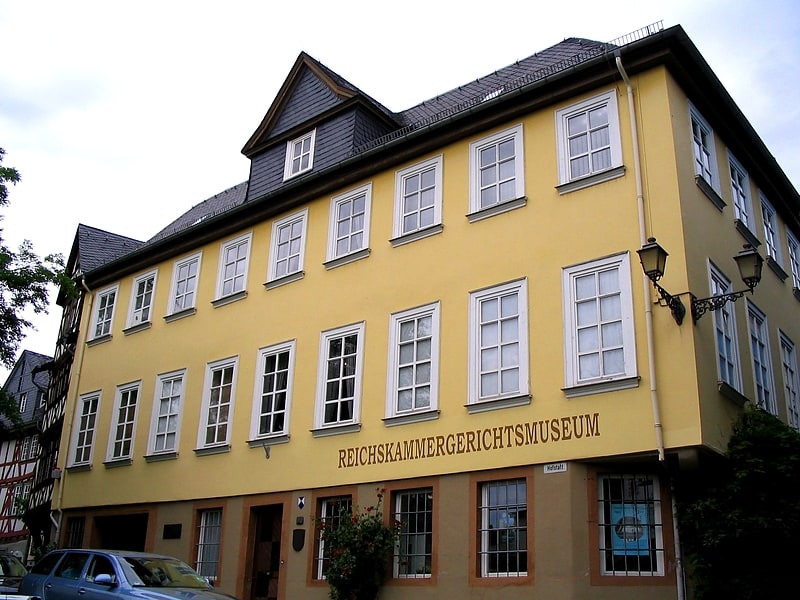
The Imperial Chamber Court Museum presents an exhibition on the structure, functioning and history of the Imperial Chamber Court throughout the period of its activity. Opened in 1987, the museum is located in Hofstatt 19 in Wetzlar, a cameral palace built by Kammergerichtsassessor Franz von Pape. It is supported by the Gesellschaft für Reichskammergerichtsforschung e.V. (Society for Research on the Imperial Chamber Court) and a scientific advisory board. Original paintings, furniture, sculptures and contemporary printed works are on display. The research center, which is located in the same building, deals with the working basis and history of the Imperial Chamber Court as well as its role in the constitutional structure of the early modern empire. Another focus is the court's personnel.
Address: Hofstatt 19, 35578 Wetzlar
Palais Papius
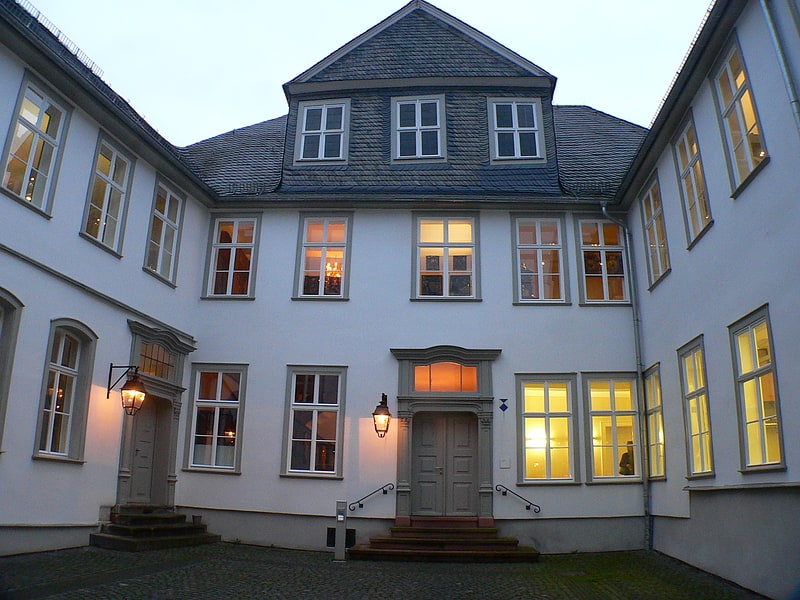
Palais Papius is a plain baroque two-story palace in the old town of Wetzlar in the Lahn-Dill district. It is located at Kornblumengasse 1.
Address: 1 Kornblumengasse, Wetzlar
Phantastische Bibliothek Wetzlar
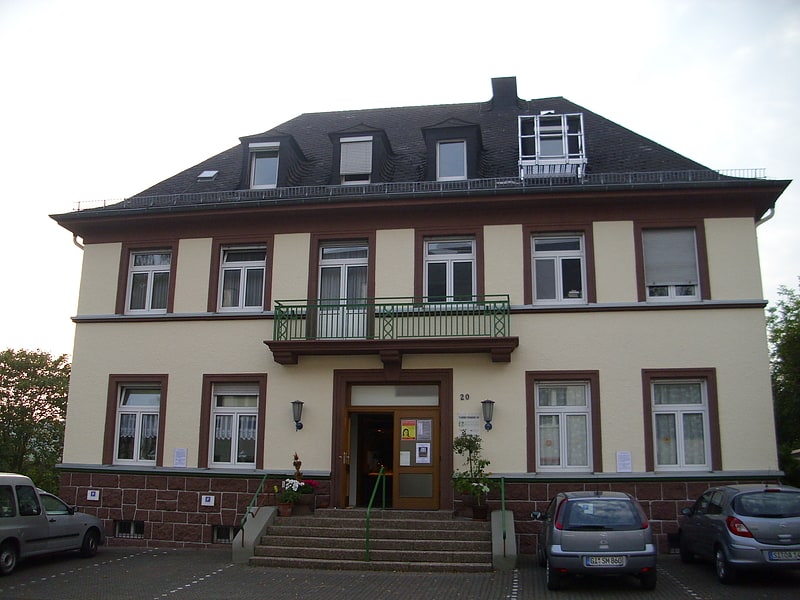
Library in Wetzlar, Germany. The Phantastische Bibliothek Wetzlar was founded in 1989 and has become one of the largest public libraries specialised in Fantasy literature worldwide, it is the largest in Europe. It is generally a reference library, open for the public and researchers.
The aim of the library is to collect everything in print which belongs to: science fiction, fantasy, literature, classical fantasy, horror, utopian novels, fantastic journey and adventure novels, fairy tales, saga, myths, etc.
At the moment the library is in possession of over 300,000 titles. This collection includes hardcovers and paperbacks, dissertations, magazines and fanzines. There are also some rare materials, e.g. the documenta 1984 science-fiction-collection.[4]
Address: Turmstr. 20, 35578 Wetzlar
Jerusalemhaus
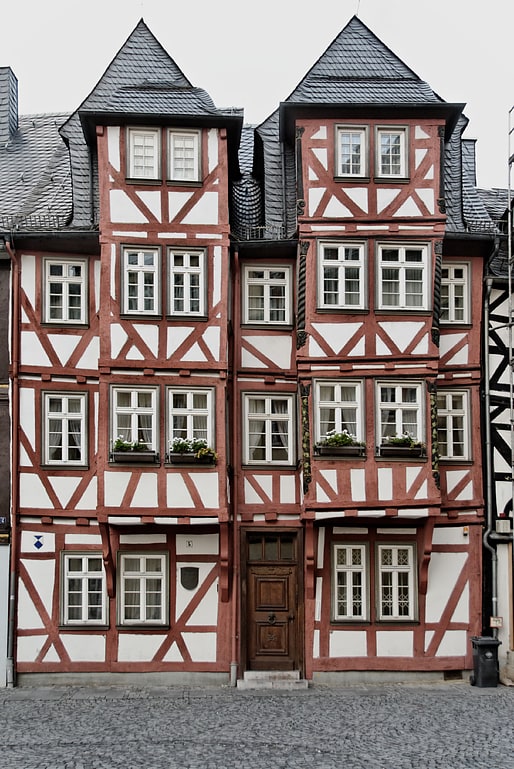
Museum. The Jerusalemhaus is a house museum at Schillerplatz 5 in Wetzlar, Germany.
On October 30, 1772, the Braunschweig legation secretary Karl Wilhelm Jerusalem shot himself here in a two-room apartment on the second floor. Goethe, who knew him personally due to an internship they completed together at the Reichskammergericht in Wetzlar, immortalized Jerusalem as the suicidal "Werther" in The Sorrows of Young Werther (1774). The apartment is today a memorial equipped with historical furniture and documents.
The Jerusalemhaus houses the Goethe-Werther-Sammlung ("Goethe-Werther Collection"). The special library strives for maximum completeness in the documentation of Goethe's novel The Sorrows of Young Werther and not only keeps precious contemporary German editions of the novel, but also collects new editions in every conceivable language. Another museum in Wetzlar, the former home of Charlotte Buff, known as the Lottehaus, also has several editions on display.
The building is a cultural monument under the Hessian Monument Protection Act.[5]
Address: Schillerplatz 5, 35578 Wetzlar
Paulskirche
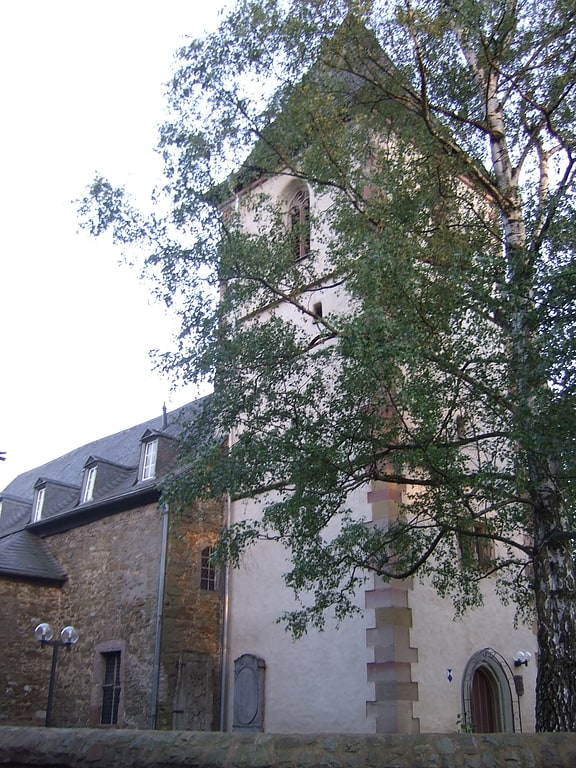
St. Paul's Church was built between 1491 and 1492 in what is now the Hermannstein district of Wetzlar in central Hesse. The late-Gothic hall church has a three-aisle front and a west tower dating from the 1520s. Significant furnishings from the time of construction include a triumphal cross, a sandstone relief from 1492, and a red sandstone baptismal font depicting the birth of Christ.
Burg Hermannstein
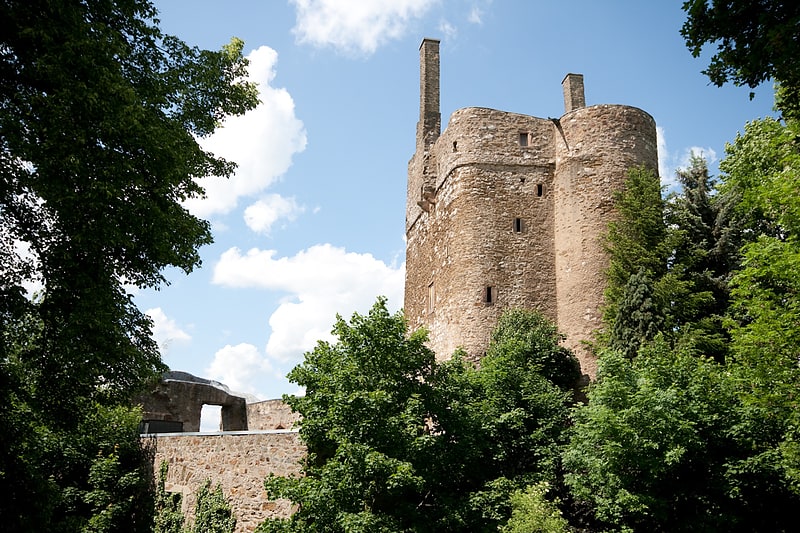
Hermannstein Castle is located on the Schwarzenberg as a hilltop castle above the present-day Wetzlar district of Hermannstein in central Hesse.
The upper castle of Hermannstein Castle was built towards the end of the 14th century to protect the High Road and the Hessian border above the Lahn Valley. Its shape is based on French donjons. The lower castle (also called the middle castle) was built in the 15th century.
Rittal Arena Wetzlar

Sports arena in Wetzlar, Germany. Rittal Arena Wetzlar is an indoor sporting arena located in Wetzlar, Germany. The capacity of the arena is 5,000 people and it was opened in 2005. It is the home to the Handball Bundesliga club HSG Wetzlar. The arena previously carried the name Mittelhessen-Arena until the naming rights to the stadium were sold in March 2006 to the German company Rittal.
The stadium was one of the venues for the 2007 World Men's Handball Championship.[6]
Address: Wolfgang-Kühle-Str. 1, 35576 Wetzlar